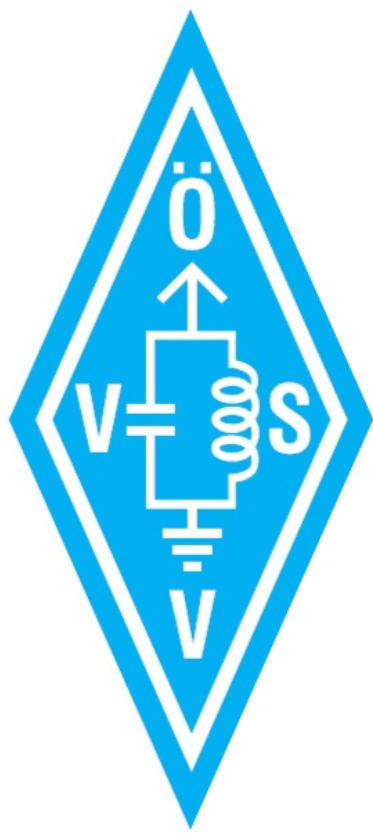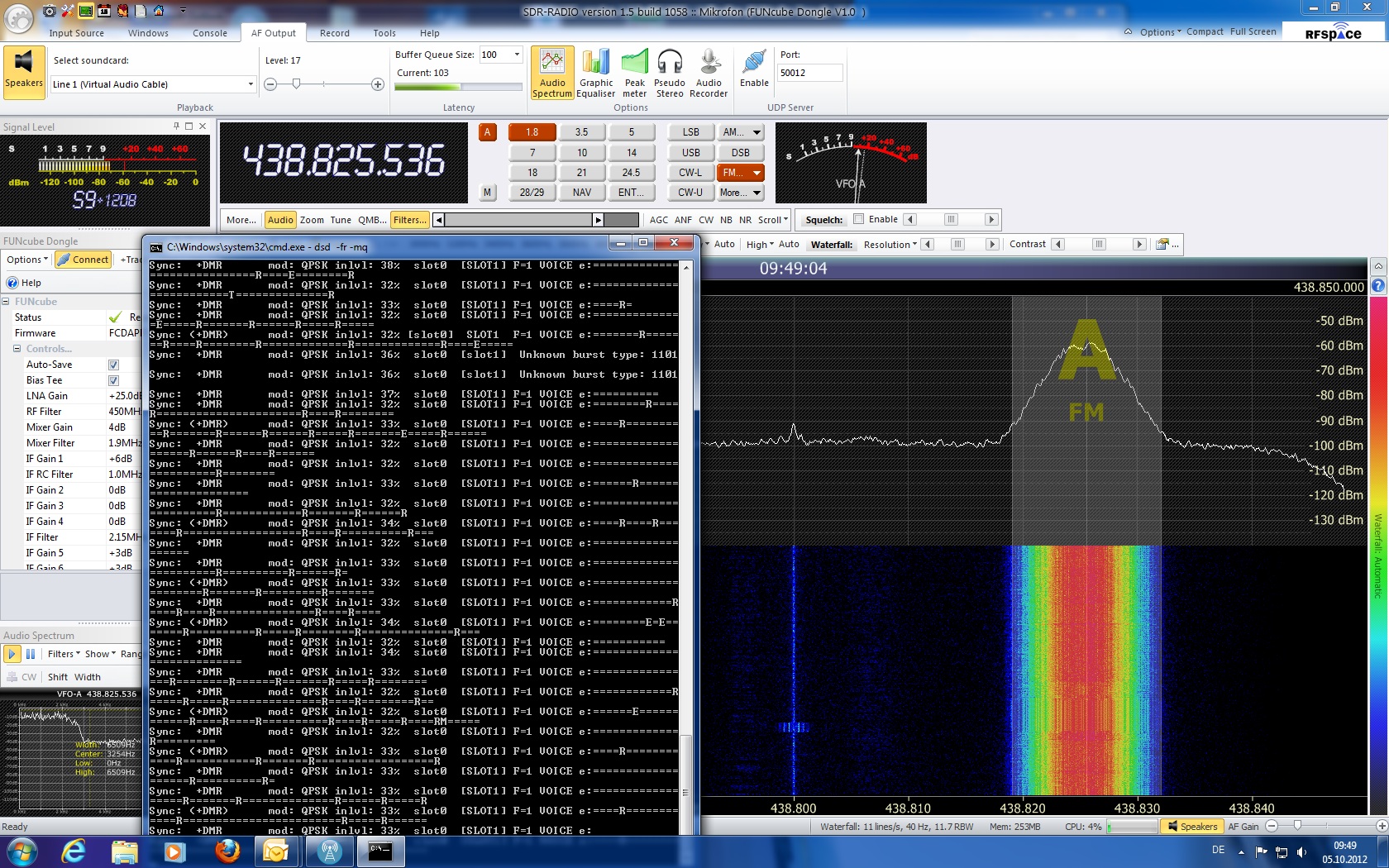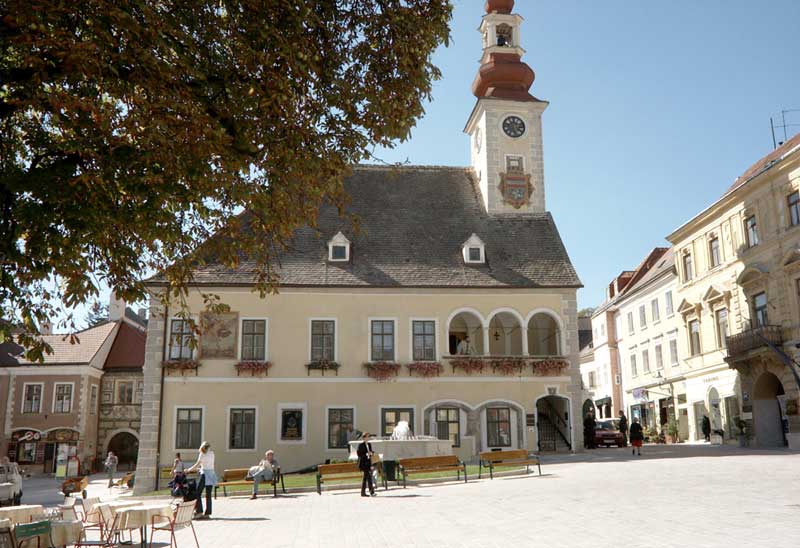
ADL 303
Willkommen beim ADL 303 - Ortsgruppe Mödling

Stadtgemeinde
Mödling
interne Links:
Digital
Speech Decoding
über FUNcube Dongle -
(Beispiel: MOTOTRBO am Wienerberg)

zum Vergrößern auf das Bild klicken.Setup:
- FUNcube dongle mit SDR-Radio (oder HDSDR, Spectravue, etc ...)
- Audio Output über Virtual Audio Cable (VAC1)
- im Windows Sound-Menue Virtual Audio Cable 1 (VAC1) als Standard-Aufnahmegerät
setzen(somit wird der digitale Roh-Audio-Stream nach /dev/dsp für den DSD-Input umgeleitet)
- in einem DOS-cmd Fenster den Digital Speech Decoder (dsd.exe) mit Optionen aufrufen
Link mit Beschreibung:
http://wiki.radioreference.com/index.php/Digital_Speech_Decoder_(software_package)"
oder Download dsd: über Hyperlink
(für MOTOTRBO hatte ich 'dsd -fr -mg' verwendet ... andere Optionen unten)
die Qualität ist zwar nicht übermäßig berauschend aber da lässt sich wahrscheinlich
noch tunen...
Ein Beispiel Video mit Ton kann hier heruntergeladen werden (5 MB !!):Viel Spaß!
73,
Bernd/OE1ACM
Steuerbefehle:
Digital Speech Decoder 1.6.0 beta with Auto P25 & DMR Filter
mbelib version 1.2.4
Usage:
dsd [options] Live scanner mode
dsd [options] -r <files> Read/Play saved mbe data from file(s)
dsd -h Show help
Display Options:
-e Show Frame Info and errorbars (default)
-pe Show P25 encryption sync bits
-pl Show P25 link control bits
-ps Show P25 status bits and low speed data
-pt Show P25 talkgroup info
-q Don't show Frame Info/errorbars
-s Datascope (disables other display options)
-t Show symbol timing during sync
-v <num> Frame information Verbosity
-z <num> Frame rate for datascopeInput/Output options:
-i <device> Audio input device (default is /dev/dsp)
-o <device> Audio output device (default is /dev/dsp)
-d <dir> Create mbe data files, use this directory
-g <num> Audio output gain (default = 0 = auto)
-n Do not send synthesized speech to audio output device
-w <file> Output synthesized speech to a .wav fileScanner control options:
-B <num> Serial port baud rate (default=115200)
-C <device> Serial port for scanner control (default=/dev/ttyUSB0)
-R <num> Resume scan after <num> TDULC frames or any PDU or TSDUDecoder options:
-fa Auto-detect frame type (default)
-f1 Decode only P25 Phase 1
-fd Decode only D-STAR* (no audio)
-fi Decode only NXDN48* (6.25 kHz) / IDAS*
-fn Decode only NXDN96 (12.5 kHz)
-fp Decode only ProVoice*
-fr Decode only DMR/MOTOTRBO
-fx Decode only X2-TDMA
-l Disable Filters (not recommended)
-ma Auto-select modulation optimizations (default)
-mc Use only C4FM modulation optimizations
-mg Use only GFSK modulation optimizations
-mq Use only QPSK modulation optimizations
-pu Unmute Encrypted P25
-u <num> Unvoiced speech quality (default=3)
-xx Expect non-inverted X2-TDMA signal
-xr Expect inverted DMR/MOTOTRBO signal* denotes frame types that cannot be auto-detected.
Advanced decoder options:
-A <num> QPSK modulation auto detection threshold (default=26)
-S <num> Symbol buffer size for QPSK decision point tracking(default=36)
-M <num> Min/Max buffer size for QPSK decision point tracking(default=15)
Besucher seit
1. Oktober 2006
*****
Copyright by oe3msu
Letzte Änderung
05.10.2012
oe3msu@oevsv.at


